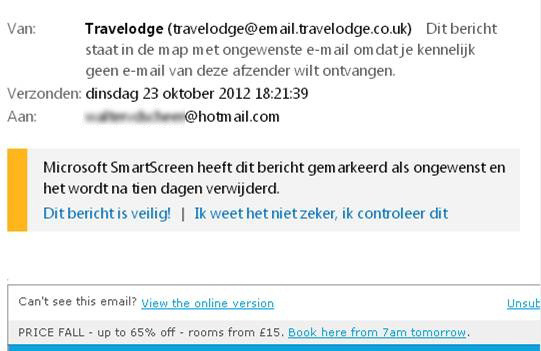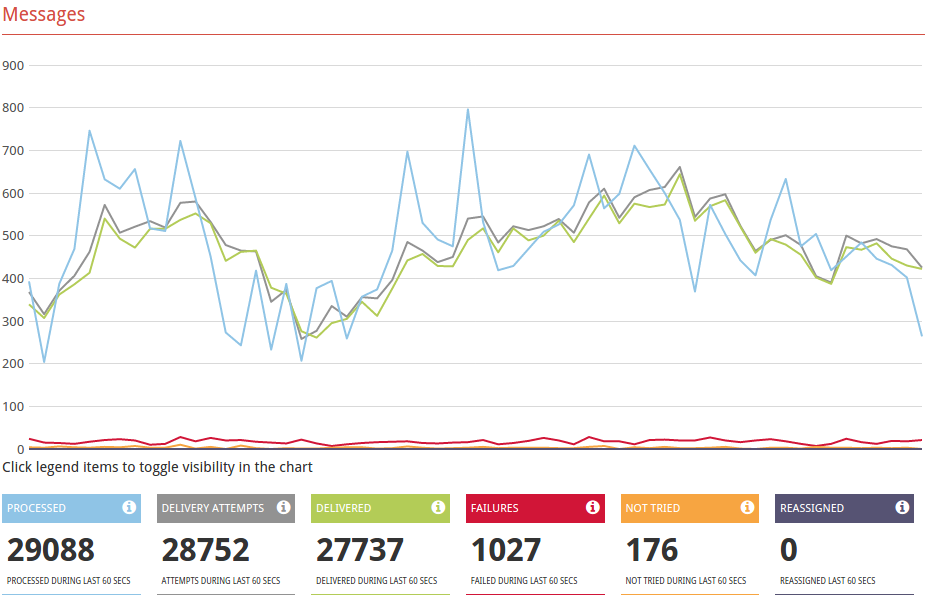Tips for an optimal deliverability using Copernica
by Michael Heering
Is this your first time sending emailings with Copernica? Then it is very important you make sure these emailings are properly delivered in the inbox of your recipients. That is why we are glad to give you some tips to ensure a good deliverability for your emailings. Below you will find more information on:
- Correctly setting your authentication data
- Reputation management
- Database management
- Content management
Correctly setting your authentication data
Setting up your authentication data is the first step toward an optimal inbox delivery. Because spam is not authentic, this is the first check mail servers perform when receiving your emails. Spammers like to use false email addresses and content. That is why spam filters will submit your emails to a strict check or will redirect your emails to the spam-folder if your authentication data is not in order.
Make sure you correctly set up your:
- Email address in the From-field: always use an existing email address that works. Avoid using a no-reply@address.
- SPF
- Sender ID
- DKIM
Reputation management
Every organization that sends emailings has its own online sending reputation or email reputation. When you start working with Copernica, you will be appointed an IP address which is used to send your emailings. A new IP address often does not have a reputation for you as you are a new user. Because ISP's (Internet Service Providers) will not recognize you as a sender from this IP address, it is important to handle your sending volumes carefully and to gradually increase these volumes if needed. Your email reputation is built up based on several factors. These are:
- The number of monthly emails you send
- The number of spam complaints
- The number of emailings to unknown recipients (how high is your bounce rate?)
- The number of opened emails (shows how relevant you are to the recipient)
Copernica is glad to help new users in building up a good email reputation. For example, we propose the following steps:
- You are appointed an IP address with a positive reputation. Using https://www.senderscore.org/ we determine the reputation of this IP address.
- We can also ‘warm up’ an IP address. If you are a new user, this means we will start with a daily mailing to a growing group of recipients (50.000, 75.000, 100.000, 250.000, it is best to spread this volume in the first month (divided by 30)), and to slowly increase the number of recipients. If you start sending too many emailings at once when you are appointed a new IP address this will have a negative impact on your reputation. You will be quickly regarded as being a spammer.
Database management
To prevent ISP’s from instantly redirecting your email to the junk mail folder, it is important to maintain a clean database and to send your emailings to recipients who respond to your email.
For example, Hotmail determines if you respond to emailings of certain recipients. If you fail to do so during a longer period, the ISP will automatically redirect your emails to the junk mail folder with the report that you ‘obviously don't want to receive emails from this sender’.
Gmail filters the content of an email to see if an email is important. For example the yellow block in the e-mailings in the Gmail account below. You can click here to indicate if the message is or isn't important.
Gmail:

Hotmail:

That is why it is important to keep your database up-to-date at all times and to ensure the quality of your database. You can do this by submitting your database to a thorough analysis. This way you are capable of dividing your database into relevant target groups. For example, you might consider creating selections based on:
- Non-respondents: create a selection of your clients who do not open your emailings or who haven't opened your newsletter after you have sent it 5 times. Remove these recipients from your sending list to try to reactivate this group in a later stage.
- (historical) Error reports: it is possible to create selections based on previous results of email campaigns within Copernica. This enables you to create selections based on error reports or bounces. Make sure you remove these addresses from your sending list as well. This increases the quality of this list and your delivery rate.
- Complaints or abuse reports: you can also keep track of which recipients have reported your emails as spam by using Copernica. For example via an abuse report. These have to be removed from your sending list immediately. If you keep sending to these recipients, this will have negative consequences for both your email reputation and your deliverability.
Other possibilities to maintain the quality of your database are:
- Top-5 ISP’s: Use Copernica's statistics to see what ISP's are used the most in your address list (generally this will be Gmail or Hotmail). Using this data, you can optimize your delivery settings for each ISP.
- Use a good segmentation and gradually build up the volume of recipients. This helps you build up a good email reputation.
- Be sure to think about setting up separate campaigns to enrich the profiles in your database. Think about which data you would like to receive from your recipients and adjust your marketing campaigns accordingly.
- You could also apply for a Return Path certification via Copernica. This ensures you of an optimized deliverability in more than 1.8 billion inboxes worldwide. However, you do have to meet certain conditions. You can read more about them here.
Content management
A final point of attention before you start sending emailings with Copernica is content management. Using Copernica you will have access to different tools that help you improve your content for an optimal deliverability.
Checks
Copernica has several checks enabling you to see:
- how high the spam score of your email is (try to keep this as low as possible)
- if there are any errors in your HTML source code
- if you are mentioned on any blacklist
- if your stylesheets are properly converted to inline style attributes
Tools for unsubscribe requests and abuse reports
- Activate Feedbackloops: Many ISP's such as Yahoo, Hotmail or AOL offer this service to organizations who send bulk mailings. Using these programs you are able to see who marked your emailings as 'spam' so you can deal with these abuse reports immediately. For example by unsubscribing the recipients or to remove him from your database. This helps you maintain a clean database and to make sure your email reputation isn't affected.
- Activate an unsubscribe header: For each emailing you send within Copernica, you can activate a list-unsubscribe header. This tool makes it easier for a recipient to unsubscribe for your emailing. It also increases the deliverability of your emailings with ISP's that support this technique.
Other tips
- Send a text version: not all email programs support HTML. In these cases, they will fall back on the text version of an emailing. Make sure you always add a text version to your emailing.
- Send along a web version: It can always happen that an HTML email is not properly displayed in an email program. In this case a web version of your email can be useful. This enables the recipient to open your emailing in a browser. If you send your emails with Copernica, the software will automatically generate a web version of your email. The only thing you have to do is add a link to the web version to your email.
- Ask your recipients to add your email address to their list of favorites within their email program. You can ask them when you first contact them via email or place the question in your preheader. Once added to this list, your emails will be delivered in the inbox.
- Use a decent preheader: Use the preheader to support your subject line and to convince your recipients to open your emails.





